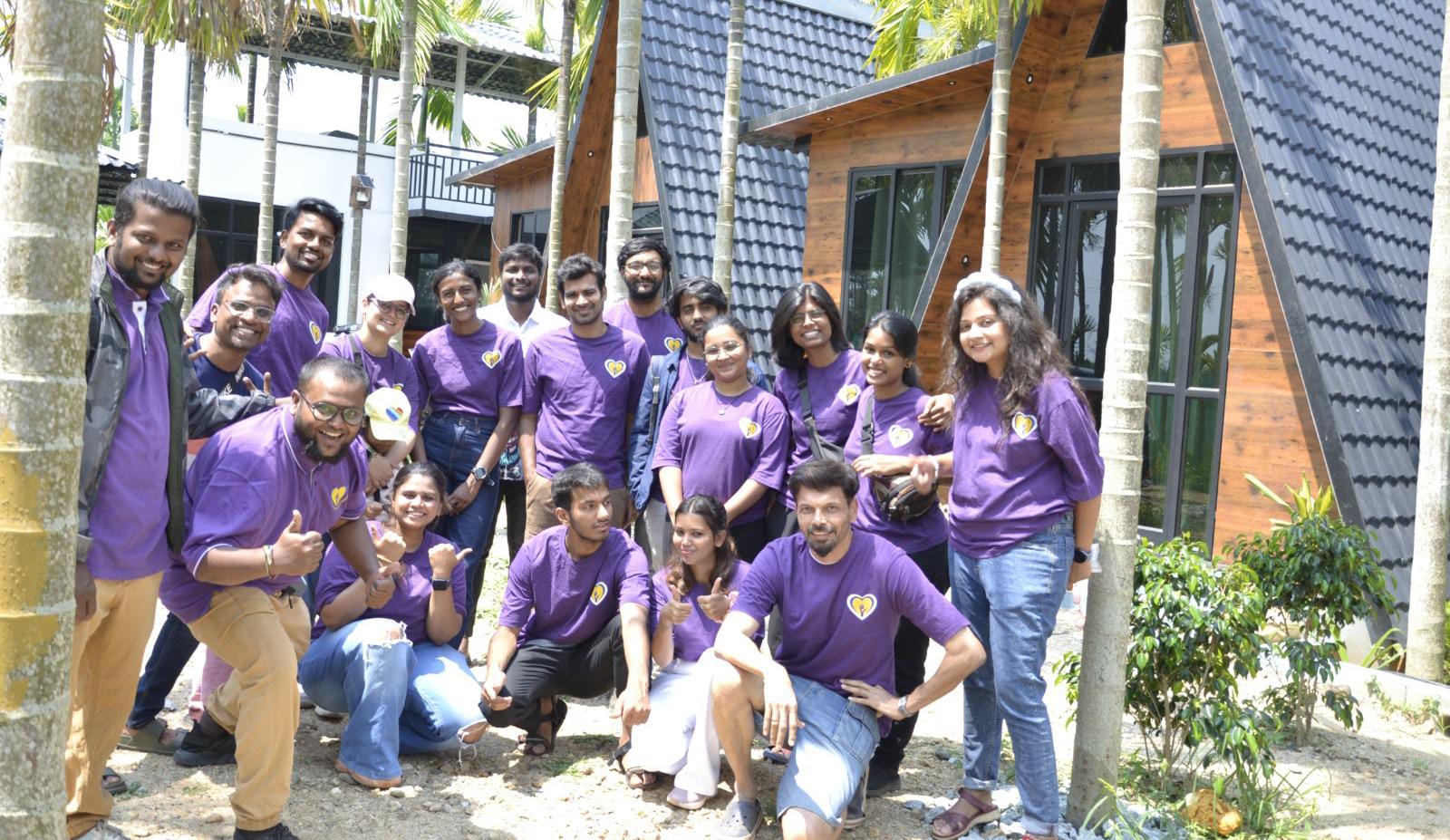The Inclusion Movement is a promise that no one will be left behind or unheard.
Published May 27, 2025 | 8:00 AM ⚊ Updated May 27, 2025 | 8:00 AM

The Inclusion Movement team.
Synopsis: Brothers Vishnu and Vishal took the initiative to begin the Inclusion Movement, encouraging direct interaction, fostering friendships, and building skills.
In a world where many still struggle with acceptance and understanding, the Inclusion Movement is a beacon of hope and change.
Founded by brothers Vishnu and Vishal Soman, the movement aims to create a truly inclusive community for people with disabilities, one where respect, empathy, and friendship replace stigma and isolation.
The journey began with a simple yet powerful idea to enrich real connections and opportunities for those often left on the margins. “Smileys has been around for a long time,” Vishnu said, “but the Inclusion Movement was born out of the desire to do more to build a society where people with disabilities are not just seen, but truly included.”
But for Vishnu, the spark to take this step wasn’t just philosophical, it was deeply personal. He lost a dear friend, Waseem, to cancer.
“After Waseem passed away, we found out that he had set aside part of his money specifically for something meaningful, something that would help others like him feel less alone,” Vishnu shared. “That hit me hard. He didn’t tell us before, but that act of love made me realize we couldn’t wait anymore. We had to act. We had to build something real.”
That moment became a turning point. Vishnu and his brother turned grief into action, reaching out, creating volunteer centers, and inviting people to join. Their goal was clear to encourage direct interaction, foster friendships, and build skills.
At the heart of this mission is the belief that inclusion is not about sympathy but about respect and equality.
For Parmeet, the movement was life-changing. Born deaf and often feeling isolated, he had faced the frustration of being misunderstood or left out. His entry into the Inclusion Movement came through a sign language workshop recommended by a friend. Hesitant at first, unsure if it was really for him, he reached out to Vishnu, who welcomed him warmly. That kindness set the tone for what became a transformative experience.
“I was nervous going to something new with strangers,” Parmeet recalled. “But everyone was kind, and for the first time, I felt safe and accepted.”
The workshop led to more than just learning signs it gave him a community. He made friends, gained confidence, and found joy in sharing his skills. “It felt like people didn’t just see me as ‘a deaf person,’ but as Parmeet, the person I am.”
Before joining, Parmeet often felt disconnected. While some college classmates tried to learn sign language, most gave up quickly, leaving him dependent on writing or gestures that sometimes felt limiting. The Inclusion Movement was different. Here, people were genuinely interested in communicating, learning, and including him. This changed how he saw himself and the world.
Today, Parmeet studies Psychology and English and volunteers with the movement while running Deaf Bookwave, an initiative that connects deaf readers. The movement gave him more than skills it gave him a voice and a place to belong.
Alongside the founders and beneficiaries are volunteers like Amrutha, whose story express the spirit of service and growth the movement inspires. Initially shy and uncertain, Amrutha found her calling when she discovered the Inclusion Movement during her postgraduate studies.
Volunteering at a center in HSR Layout, she worked closely with children with disabilities, learning about empathy, communication, and the power of friendship.
“Before this, I was an introvert, unsure about speaking up,” Amrutha said. “Now, I confidently talk about inclusion and disability. This movement taught me to see people beyond their disabilities to respect and understand them.”
Her journey from volunteer to community coordinator shows the movement’s commitment to nurturing leadership and deepening impact. Amrutha highlights that inclusion is about connection, not just physical presence “It’s about sharing feelings, supporting each other, and building friendships that go beyond family and superficial help.”
For Vishnu, the future is hopeful but focused. The Inclusion Movement aims to expand, bringing more people together, educating communities, and breaking down barriers social, physical, and emotional. “We want to create a society where inclusion is natural, where people with disabilities get equal opportunities and respect. It’s not about pity; it’s about friendship and real understanding.”
From Parmeet’s journey of empowerment, Amrutha’s growth in confidence, to Vishnu’s vision sparked by Waseem’s quiet generosity, the movement reflects a shared belief that inclusion is possible when people meet each other with open hearts and open minds.
The Inclusion Movement is more than a project, it is a promise. A promise that no one will be left behind or unheard. A promise that belonging is a right, not a privilege. And as more people join hands, this promise grows stronger every day.
(Edited by Majnu Babu).
